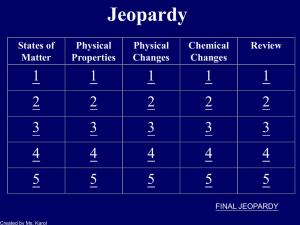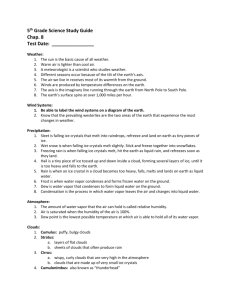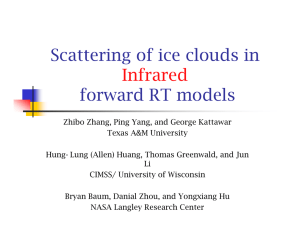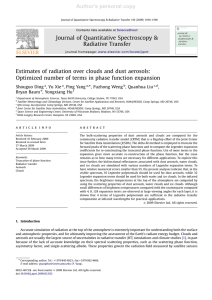A Sample Form of a Manuscript for the Atmosphere
advertisement
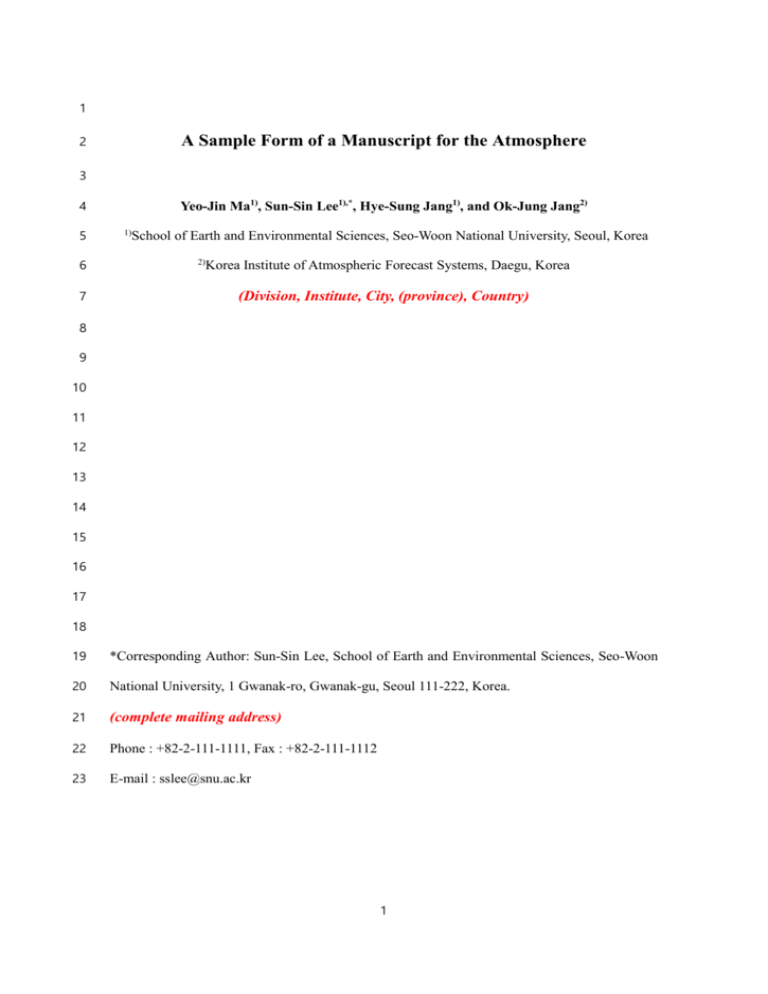
1 2 A Sample Form of a Manuscript for the Atmosphere 3 4 5 6 7 Yeo-Jin Ma1), Sun-Sin Lee1),*, Hye-Sung Jang1), and Ok-Jung Jang2) 1) School of Earth and Environmental Sciences, Seo-Woon National University, Seoul, Korea 2) Korea Institute of Atmospheric Forecast Systems, Daegu, Korea (Division, Institute, City, (province), Country) 8 9 10 11 12 13 14 15 16 17 18 19 *Corresponding Author: Sun-Sin Lee, School of Earth and Environmental Sciences, Seo-Woon 20 National University, 1 Gwanak-ro, Gwanak-gu, Seoul 111-222, Korea. 21 (complete mailing address) 22 Phone : +82-2-111-1111, Fax : +82-2-111-1112 23 E-mail : sslee@snu.ac.kr 1 1 2 3 4 5 6 Abstract(new page) Abstract A parameterization for the scattering of longwave radiation by ice clouds has been developed …………………………………………………………………………………………… …………………………………………………………………………………………………... (Abstract should not exceed 250 words. Citation references should not appear) 7 8 9 10 11 12 13 14 15 16 17 18 19 Key words: Longwave radiation, ice cloud, single scattering property, parameterization 20 andcooling rate (equal or less than 5 words. Keywords should be provided in English.) 2 1 1. Introduction(primary heading, 1st page of main text, new page) 2 About 16% or more of the whole earth is covered with thin clouds (Patterson, 3 2001), which include a great amount of ice crystals. The radiative effects of cirrus 4 clouds should be treated carefully, since the flux density change in the atmosphere and 5 at the surface according to the sizes and shapes of these clouds………………………… 6 …………………………………………………………………………………………………… 7 ……………………………………………………………………………………. 8 9 1.1 Data and methods (secondary heading) 10 1.1.1 Choosing one model(tertiary heading) 11 Let us consider the plane parallel atmosphere, the upward and downward flux (Chou et 12 al., 2002b) at level p can be computed from following Eqs. (1) and (2). 13 …………………………………………………………………………………………… 14 ………………………………………………………………….. 15 . 16 1.1.1.1 Station-measured precipitation data(quaternary heading) 17 Figures 4-6 show regression curves of scattering properties according to the effective 18 sizes and the nine spectral bands (Table 1) for the mixture of ice crystals (Chou et al., 19 2002b) with Eqs………………………………………………………………………… 20 …………………………………………………………………………………………… 21 22 2. Results(primary heading) 23 The flux and cooling rates were calculated with the optical thickness and the effective 24 size of ice crystals, applying the six-stream discrete ordinate algorithm to estimate the 25 effectsof………………………………………………………………………………… 26 …………………………………………………………………………………………. 3 1 3. Conclusions(primary heading) 2 In the existing GCM or numerical model, the calculation of longwave flux considers 3 only the absorption of ice clouds by a simple experience formula, leaving the scattering 4 properties of clouds out of co…………………………………………………………….. 5 …………………………………………………………………… 6 7 Acknowledgments 8 This research is supported by………………………………………………………… 9 Appendix(optional) 10 4 1 REFERENCES (new page, Should be for authors to provide English references) 2 Chou, M. D., K. T. Lee, and P. Yang, 2002a : Parameterization of shortwave cloud 3 optical properties for a mixture of ice particle habits for use in atmospheric models. J. 4 Geophys. Res., 107, 4600, doi:2002JD002061. 5 ______, M. J. Suarez, X. Z. Liang, and M. M.-H Yan, 2002b: A Thermal Infrared 6 Radiation Parameterization for Atmospheric Studies. NASA Technical Memorandum, 7 19(104606), 55 pp. 5 1 Table 1. (new page)Locations of Ieodo Ocean Research Station (IORS) and Array for Real-time 2 Geostrophic Oceanography (ARGO), water depths at the position, and ID numbers of ARGO. Data Type Longitude (oE) Latitude (oN) Depth (m) ID number IORS 125.17 32.11 65 - G1 137.08 21.96 2000 2900432 G2 127.43 20.90 1400 2900518 G3 127.38 16.79 2000 2900435 G4 127.88 12.37 1500 2900516 G5 132.05 12.61 1500 2900523 ARGO Float 3 4 6 1 Fig. 1. (new page) Schematic diagram of model domain and experimental design. 2 7
